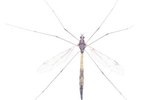
Butterfly life cycles are consistent amid the numerous species. Butterflies start off as eggs that hatch into caterpillars, which transform into pupae that later emerge as butterflies. Meanwhile, many differences exist between male and female adult butterflies, including behavior and appearance.
Behavior
Male and female butterflies partake in varying behaviors. For example, the male dingy swallowtail butterfly continuously flies around his territory, which spans almost 350 feet across, to keep out other males. Contrarily, females fly around aimlessly with no real pattern, in search of food. If you see a dingy swallowtail butterfly who appears to be flying by the same location over and over, he is likely a male.
Size
Generally, female butterflies are larger than males. This is for reproductive purposes, as females need larger abdomens and wings in order to carry their eggs, which number in the hundreds per clutch. Small pupae, or caterpillars undergoing transformation to become butterflies, are typically female. However, overall size varies by species. For example, male monarch butterflies are slightly larger than females.
Appearance
The appearance of male and female butterflies varies depending on species. The most recognizable of differences belongs to the patterns and coloring of wings. For example, male monarch butterflies have singular black spots on each of the lower portions of their wings, whereas females do not. Female monarch butterflies have thicker veins, or black lines, along their wings than males. Male skipper butterflies have singular lines down the middles of their upper wings, separating the lighter-colored patches on their wings; females do not.
Eggs
Another way of telling the gender of a butterfly is to watch and see whether the creature lays eggs. If you catch a butterfly and keep it overnight, if she's female, she likely will have laid a clutch by morning. If no eggs are present, the butterfly is presumably male. If you choose to catch a butterfly to determine gender, handle the fragile thing with care. Release the creature the next morning so the butterfly can continue to find food and mate.
References
Resources
Photo Credits
-
Hemera Technologies/PhotoObjects.net/Getty Images
Writer Bio
Amanda Williams has been writing since 2009 on various writing websites and blogging since 2003. She enjoys writing about health, medicine, education and home and garden topics. Williams earned a Bachelor of Science in biology at East Stroudsburg University in May 2013. Williams is also a certified emergency medical technician.




